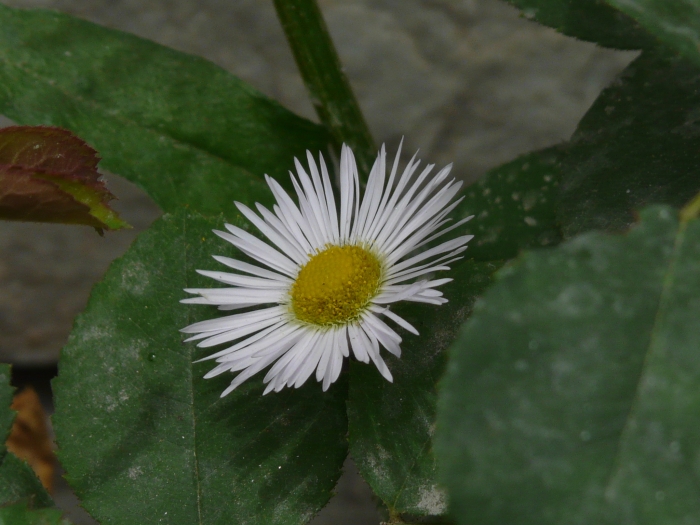Annual Fleabane
(Erigeron annuus)
Annual Fleabane (Erigeron annuus)
/
/

© Dinesh Valke
CC BY-SA 4.0
Image By:
© Dinesh Valke
Recorded By:
Copyright:
CC BY-SA 4.0
Copyright Notice:
Photo by: © Dinesh Valke | License Type: CC BY-SA 4.0 | License URL: http://creativecommons.org/licenses/by-sa/4.0/ | Uploader: dineshvalke | Publisher: iNaturalist |











Estimated Native Range
Summary
Erigeron annuus, commonly known as Annual Fleabane, is an herbaceous plant that can behave as an annual or biennial, native to open fields, prairies, and meadows across North America. It typically grows to a height of 12 to 59 inches with a bushy form. The leaves are alternate, simple, and can vary in shape. The plant produces numerous daisy-like flowers with white to pale lavender ray florets surrounding a yellow disc, blooming profusely from late spring to early fall. The flowers are modest in size but can be quite showy due to their abundance.
Annual Fleabane is valued for its ease of growth and its ability to attract pollinators such as bees and butterflies. It is often used in wildflower gardens, meadow plantings, and as a filler in borders due to its airy appearance. It prefers full sun to part shade and is tolerant of a wide range of soil types, though it thrives in well-drained soils. While it requires moderate watering, it can tolerate periods of drought once established. Gardeners should be aware that it can self-seed prolifically and may become weedy or invasive outside of its native range.CC BY-SA 4.0
Annual Fleabane is valued for its ease of growth and its ability to attract pollinators such as bees and butterflies. It is often used in wildflower gardens, meadow plantings, and as a filler in borders due to its airy appearance. It prefers full sun to part shade and is tolerant of a wide range of soil types, though it thrives in well-drained soils. While it requires moderate watering, it can tolerate periods of drought once established. Gardeners should be aware that it can self-seed prolifically and may become weedy or invasive outside of its native range.CC BY-SA 4.0
Plant Description
- Plant Type: Herb
- Height: 1-5 feet
- Width: 1-2.5 feet
- Growth Rate: Rapid
- Flower Color: White, Yellow
- Flowering Season: Spring, Summer, Fall
- Leaf Retention: Deciduous
Growth Requirements
- Sun: Full Sun
- Water: Medium
- Drainage: Medium, Fast
Common Uses
Border Plant, Butterfly Garden, Low Maintenance
Natural Habitat
native to open fields, prairies, and meadows across North America
Other Names
Common Names: Eastern Daisy Fleabane, Daisy Fleabane, Feinstrahl-Berufkraut, Sweet-Scabious, Tall Fleabane, Whitetop
Scientific Names: , Erigeron annuus, Aster annuus, Aster stenactis, Cineraria corymbosa, Diplopappus annuus, Diplopappus dubius, Doronicum bellidiflorum, Doronicum bellidifolium, Erigeron annuus
GBIF Accepted Name: